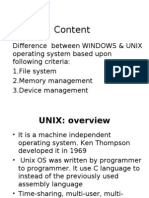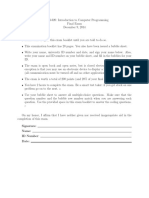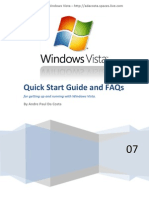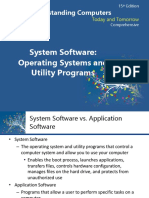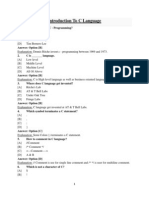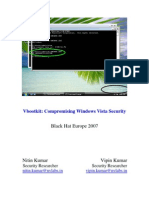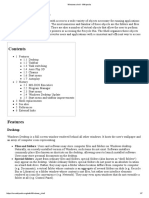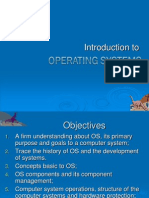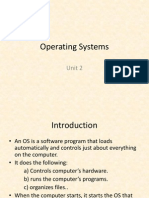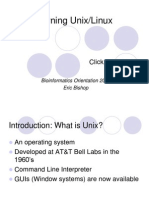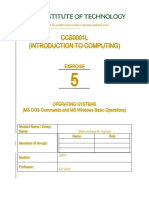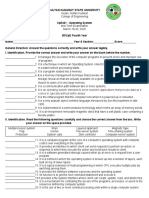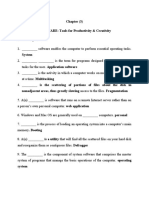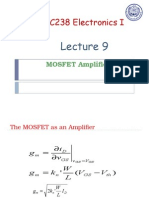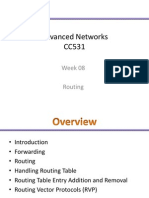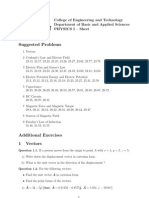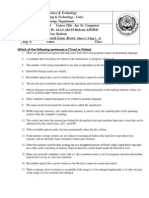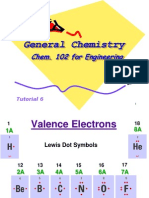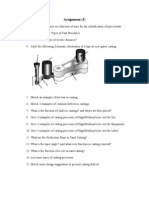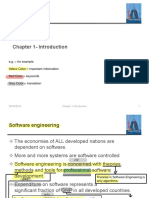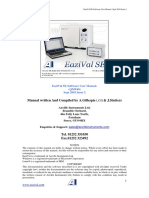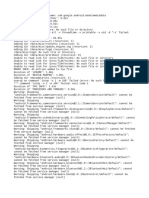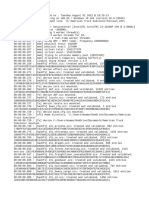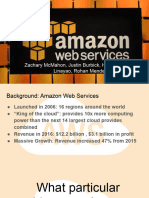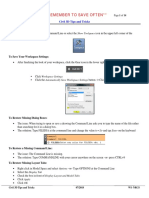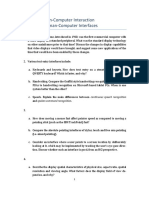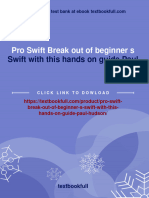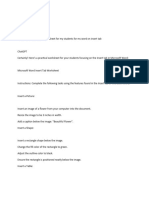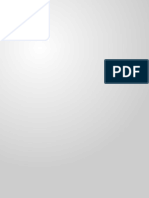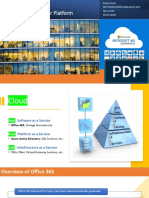000 2013 12 Week Review Sheet2 Ch5 Answer
000 2013 12 Week Review Sheet2 Ch5 Answer
Uploaded by
Sara El-GendyCopyright:
Available Formats
000 2013 12 Week Review Sheet2 Ch5 Answer
000 2013 12 Week Review Sheet2 Ch5 Answer
Uploaded by
Sara El-GendyOriginal Description:
Copyright
Available Formats
Share this document
Did you find this document useful?
Is this content inappropriate?
Copyright:
Available Formats
000 2013 12 Week Review Sheet2 Ch5 Answer
000 2013 12 Week Review Sheet2 Ch5 Answer
Uploaded by
Sara El-GendyCopyright:
Available Formats
Arab Academy for Science & Technology College of Engineering & Technology - Cairo Computer Engineering Department Course
Code: CC111 Course Title : Int. To Computers Examiner : Prof. Dr. ALAA Abd El-Raheem AHMED. Spec. : First Year Students The 12th Wweek Review Sheet 2 ( Chap 5) Reg. #: Name: Class:
Which of the following sentences is (True) or (False):
In practice, the difference between system and application software is not always clear cut. T Most operating systems today use a text-based user interface. F As you work on your computer, the operating system is in charge of managing system resources and making them available to devices and programs when they are needed. T Filename rules are the same in all operating systems. F File extensions should not be changed by the user because the operating system uses them to identify the program that should be used to open the file. T Using virtual memory is faster than just using RAM. F There are two primary forms of DOS: PC-DOS and MS-DOS. T There is still a large installed base of Windows XP users and Microsoft plans to support Windows XP until 2014. T Windows 98 was built from the ground up using a different kernel than the other versions of Windows. F Although Linux originally used a command line interface, most recent versions of Linux programs use a graphical user interface. T Large computer systemssuch as high-end servers, mainframes, and supercomputers sometimes use operating systems designed solely for that type of system. T Linux is increasingly being used with both mainframes and supercomputers. T There are many stand-alone utility programs available as an alternative to the operating systems utility programs. T Stand-alone utility programs are often available in a suite of related programs. T Once a file management program is open, you can look at the folders and files stored on your PC. T Files and folders deleted from removable media cannot be restored by any method. F Using the Save As option of the File menu before editing a document is a good idea, so you can return to the original version, if needed. T
Choice the correct answer
System software is usually divided into two categories: operating system software and ____ programs. B a. planning systemc. FAT system b. utility d. background ____ software consists of the operating system and utility programs that control a computer system and allow you to use your computer. D a. Background c. Application b. Front-end d. System
____ includes all the programs that allow a user to perform specific tasks on a computer, such as writing a letter. C a. System software c. Application software b. Utility programs d. Background programs The ____ boots the computer, launches application software programs, and ensures that all actions requested by a user are valid and processed in an orderly fashion. B a. startup c. driver b. operating system d. registry The means by which an operating system or any other program interacts with the user is called the ____. D a. user login c. program front-end b. programming interface d. user interface Filenames typically include a ____ at the end of the filename. A a. file extension c. file subname b. file subscript d. file attachment Most operating systems have security features available, such as an integrated ____ to protect against unauthorized access via the Internet. B a. router c. hub b. firewall d. modem Most operating systems have security features available, such as an option to automatically download and install ____ from the operating systems manufacturer on a regular basis. C a. security walls c. security patches b. device patches d. device drivers All programs and data located in RAM are divided into fixed-length ____ or variable-length segments, depending on the operating system being used. C a. pies c. pages b. sectors d. cylinders ____ memory allows you to use more memory than is physically available on your computer. a. Shared c. Multithreading B b. Virtual d. Buffer A ____ is an area in RAM or on the hard drive designated to hold input and output on their way in or out of the system. B a. segment c. page b. buffer d. sector One of the most obvious initial changes in Windows Vista is the ____ interface. C a. Leopard c. Aero b. Android d. Symbian The most recent version of Windows is Windows ____. C a. Leopard c. 7 b. XP d. Vista ____ is the proprietary operating system for computers made by Apple Corporation. C a. Linux c. Mac OS b. Solaris d. Unix ____ was originally developed in the late 1960s at AT&T Bell Laboratories as an operating system for midrange servers. B a. Linux c. Solaris b. UNIX d. Mac OS X In addition to personal operating systems and server operating systems, there are also mobile operating systems and ____. A a. embedded operating systems c. virtual operating systems
b. high-performance operating systems d. storage operating systems ____ is a family of operating systems based on Windows that is designed primarily for consumer and industrial devices that are not personal computers. B a. Windows Vista c. Windows Server 2003 b. Windows Embedded d. Windows Mobile ____ is the current version of Windows Phone. C a. Windows Phone 9 c. Windows Phone 7 b. Windows Phone 5 d. Windows Server 2011 ____ is the most widely used mobile operating system worldwide. D a. Mac OS c. Windows Mobile b. Palm OS d. Symbian OS The file management program incorporated into Windows is ____. C a. StuffIt c. Windows Explorer b. WinZip d. Disk Cleanup To restore a file or folder deleted from your computers hard drive, open your computers ____ and restore the file to its original location. A a. Recycle Bin c. System Restore program b. Windows Explorer d. Recycle Menu ____ are utility programs that search for documents and other files on a users hard drives. A a. Search tools c. Search engines b. Tool boxes d. Tool programs Creating a(n) ____ means making a duplicate copy of important files so that when a problem occurs, you can restore those files using the backup copy. B a. mirror c. index b. backup d. hidden file A ____ is a software program that is designed to cause damage to the computer system or perform some other malicious act. D a. firewall c. spyware b. utility program d. computer virus
Complete the following statements One of the principal roles of every _____OS_______ is to translate user instructions into a form the computer can understand. During the boot process, the essential portion, or core, of the operating system (called the ___Kernel_______) is loaded into memory. In Windows, certain system configuration information is stored in the ___registry_______ files. ____Scheduling_____ routines in the operating system determine the order in which jobs are carried out, as well as which commands get executed first if the user is working with more than one program at one time or if the computer supports multiple users. Device drivers usually need to be updated or reinstalled after you ___upgrade_______ your operating system to a newer version or after you buy a new computer. One memory management technique frequently used by operating systems is _____virtual memory_____, which uses a portion of the computers hard drive as additional RAM. The process of placing items in a buffer so they can be retrieved by the appropriate device when needed is called ______spooling____. DOS traditionally used a command line interface, although newer versions of DOS support a(n) ____menu-driven____ interface. As shown in the accompanying figure, Windows users can still issue ______DOS______ commands via the Command Prompt.
To make it easier to use and manage all of your connected devices, Windows 7 includes a new _____Device Stage______. ____Mac OS_____ is based on the UNIX operating system and originally set the standard for graphical user interfaces. _____Linux______ is an operating system developed by Linus Torvalds in 1991 when he was a student at the University of Helsinki in Finland. In the past few years, ____ Linux _____ has grown from an operating system used primarily by computer techies who disliked Microsoft to a widely accepted operating system with strong support from mainstream companies. The latest MAC operating system is MAC OS X ______Lion______. _____iOS_____ is the operating system designed for Apple mobile phones and mobile devices. A(n) _____utility program______ is a type of software program that performs a specific task, usually related to managing or maintaining the computer system. With Windows Explorer, click a drive or ______Folder______ icon in the left pane to display its contents in the right pane. ____Search tools______ are utility programs that search for documents and other files on a users hard drives. _____Spyware______ is a software program installed without the users knowledge that secretly collects information and sends it to an outside party via the users Internet connection.
Answer the following questions Q. Describe the functionality of an operating system. A computers operating system is a collection of programs that manage and coordinate the activities taking place within the computer and it is the most critical piece of software installed on the computer. The operating system boots the computer, launches application software, and ensures that all actions requested by a user are valid and processed in an orderly fashion. For example, when you issue the command for your computer to store a document on your hard drive, the operating system must perform the following steps: 1) make sure that the specified hard drive exists, 2) verify that there is adequate space on the hard drive to store the document and then store the document in that location, and 3) update the hard drives directory with the filename and disk location for that file so that the document can be retrieved again when needed. In addition to managing all of the resources associated with your local computer, the operating system also facilitates connections to the Internet and other networks. Q. Explain multitasking with reference to an operating system. Multitasking refers to the ability of an operating system to have more than one program (also called a task) open at one time. Without the ability to multitask, an operating system would require the user to close one program before opening another program. Virtually all of todays operating systems support multitasking. Although multitasking enables a user to work with multiple programs at one time, a single CPU core cannot execute more than one task at one time (unless Intels Hyper-Threading Technology or another technology that allows a single core to function as two cores is used). Consequently, the CPU rotates between processing tasks, but it works so quickly that to the user it appears as though all programs are executing at the same time. Q Explain multithreading. A thread is a sequence of instructions within a program that is independent of other threads. Examples might include spell checking, printing, and opening documents in a word processing program. Operating systems that support multithreading have the ability to rotate between multiple threads (similar to the way multitasking can rotate between multiple programs) so that processing is completed faster and more efficiently, even though only one thread is executed by a single core at one time. Most current operating systems support multithreading.
Q Compare graphical user interfaces (GUIs) with command line interfaces. Most PC operating systems today use a graphical user interface (GUI). The older DOS operating system and some versions of the UNIX and Linux operating systems use a command line interface, although graphical versions of UNIX and Linux are available. With a command line interface, commands to the computer are typed using the keyboard; graphical user interfaces allow the user to issue commands by selecting icons, buttons, menu items, and other graphical objects with a mouse or other pointing device. Q What is the purpose of uninstall utilities? As programs are used, temporary data is often created. When programs are uninstalled (removed from the hard drive), this data and other remnants of that program can be left behind on the hard drive or in system files unless an uninstall utility is used. If a user removes programs by deleting the programs folder (which is not the recommended method for removing programs), the extraneous data is left behind, using up valuable disk space and, sometimes, slowing down the computer. Uninstall utilities remove the programs along with related extraneous data, such as references to those programs in your system files.
You might also like
- TCMS - External Pentest ChecklistDocument13 pagesTCMS - External Pentest ChecklistDesi HackerNo ratings yet
- Fundamentals PDFDocument318 pagesFundamentals PDFBushraSoft LightningNo ratings yet
- 03 Activity 3 - ARGDocument4 pages03 Activity 3 - ARGstapaNo ratings yet
- Diffrence Between Windows and UnixDocument18 pagesDiffrence Between Windows and UnixSh AvyNo ratings yet
- Events Leading To Creation: SystemDocument10 pagesEvents Leading To Creation: Systemjagroop kaurNo ratings yet
- 2013 CC111 Int Comp Sheet 1 AnswerDocument11 pages2013 CC111 Int Comp Sheet 1 AnswerSara El-GendyNo ratings yet
- Introduction To Computer Programming Exam Final BDocument20 pagesIntroduction To Computer Programming Exam Final BPencacai KelimaNo ratings yet
- 01 Laboratory Exercise 1 (Platform)Document2 pages01 Laboratory Exercise 1 (Platform)Ma. Cristina NolloraNo ratings yet
- Windows HistoryDocument22 pagesWindows HistoryXOsarNo ratings yet
- CHAPTER 2 Hardware Software ConceptDocument6 pagesCHAPTER 2 Hardware Software ConceptSeema Sehdev100% (1)
- 01 Laboratory Exercise Lorejo JomreyDocument3 pages01 Laboratory Exercise Lorejo JomreyJimboy LorejoNo ratings yet
- Operating System BasicsDocument6 pagesOperating System BasicsMartin WekesaNo ratings yet
- 03 - Quiz - 1 - Dela CernaDocument2 pages03 - Quiz - 1 - Dela CernaNerren Ann Caseñas EspinaNo ratings yet
- Tle 10 Q2 - LasDocument12 pagesTle 10 Q2 - LasmarichuNo ratings yet
- Burn An ISO To A USB Flash DriveDocument15 pagesBurn An ISO To A USB Flash DriveRhain CongayoNo ratings yet
- Task Performance Prelim - Platform TechnologyDocument2 pagesTask Performance Prelim - Platform TechnologypixevNo ratings yet
- Windows Vista Quick Start GuideDocument28 pagesWindows Vista Quick Start GuideComputer Guru100% (8)
- Topic 1 - Computer Processing ConceptDocument37 pagesTopic 1 - Computer Processing ConceptkimiskyperNo ratings yet
- 02 Task Performance 1 Data and Digital Comms (Javier)Document1 page02 Task Performance 1 Data and Digital Comms (Javier)Vinz Dominic JavierNo ratings yet
- 02 Taskperformance 01Document3 pages02 Taskperformance 01Ivan DiosoNo ratings yet
- 03 Laboratory Exercise 1Document1 page03 Laboratory Exercise 1Janela Natal MurilloNo ratings yet
- System Software: Operating Systems and Utility Programs: Understanding ComputersDocument52 pagesSystem Software: Operating Systems and Utility Programs: Understanding ComputersAleena YounasNo ratings yet
- 04 Laboratory Exercise 142Document2 pages04 Laboratory Exercise 142andres tabaldoNo ratings yet
- "Linux": A Technical Report ONDocument34 pages"Linux": A Technical Report ONrao7No ratings yet
- 08 Laboratory Exercise 1 - ARGDocument4 pages08 Laboratory Exercise 1 - ARGlevardojayjay910No ratings yet
- Introduction To UNIX: Lecture One: 1.1 ObjectivesDocument10 pagesIntroduction To UNIX: Lecture One: 1.1 ObjectivesSembi EmmanuelNo ratings yet
- Detect OS, Services, and VulnerabilitiesDocument2 pagesDetect OS, Services, and VulnerabilitiesTuan DuongNo ratings yet
- Linux Case StudyDocument3 pagesLinux Case StudyGuru PrasanthNo ratings yet
- Os FileDocument57 pagesOs Fileguptatulsi31No ratings yet
- Lab Work 1Document2 pagesLab Work 1Adly HakimNo ratings yet
- Assignment 1Document10 pagesAssignment 1Katlego MaplankaNo ratings yet
- Guide To Dual BootingDocument31 pagesGuide To Dual BootingHarry WanNo ratings yet
- Module 1 CSCC 101Document46 pagesModule 1 CSCC 101Arianne Rose FangonNo ratings yet
- Introduction To C LanguageDocument9 pagesIntroduction To C LanguagekalaivaniNo ratings yet
- Second Syllabus IT E 203 Professional Elective 2 - Web Systems and TechnologiesDocument6 pagesSecond Syllabus IT E 203 Professional Elective 2 - Web Systems and TechnologiesMichaelangelo R. SerranoNo ratings yet
- 08 Task Performance 1Document1 page08 Task Performance 1Daniela RoldanNo ratings yet
- D1 - Vipin Kumar - Nitin Kumar - VBootKit - Compromising Windows Vista SecurityDocument49 pagesD1 - Vipin Kumar - Nitin Kumar - VBootKit - Compromising Windows Vista SecurityjayarajanNo ratings yet
- Lesson 2 Being A Digital CitizenDocument59 pagesLesson 2 Being A Digital CitizenLyz StormbrowNo ratings yet
- Windows Shell - WikipediaDocument7 pagesWindows Shell - WikipediamjdiaznoveloNo ratings yet
- OS Module 1-ADocument75 pagesOS Module 1-ALanie ArcoNo ratings yet
- 03 Laboratory Exercise 13 Operating System Threads+ (1) - Abcdpdf - PDF - To - WordDocument6 pages03 Laboratory Exercise 13 Operating System Threads+ (1) - Abcdpdf - PDF - To - WordGERLYN NOICA ROSE VILLANUEVA100% (1)
- The Objectives and Functions of Operating Systems: Student - Feedback@sti - EduDocument5 pagesThe Objectives and Functions of Operating Systems: Student - Feedback@sti - Edunew genshinNo ratings yet
- 5 Operating SystemsDocument23 pages5 Operating SystemsPoorna ChelvanNo ratings yet
- PlatformTechnologies Exam PrintDocument5 pagesPlatformTechnologies Exam PrintJhe MaejanNo ratings yet
- Ict Notes 4,5,6 Pre UpdateDocument19 pagesIct Notes 4,5,6 Pre UpdateAtif Mehmood100% (1)
- FINAL EXAM - Introduction To ComputingDocument28 pagesFINAL EXAM - Introduction To ComputingJESSEL MONTILLANo ratings yet
- Learning Unix/Linux: Click To Add TextDocument58 pagesLearning Unix/Linux: Click To Add TextAnkita SharmaNo ratings yet
- LAB Act. Task 3Document16 pagesLAB Act. Task 3Cale PanidarNo ratings yet
- CpE 221 Midterm Exam StudentsDocument2 pagesCpE 221 Midterm Exam StudentsCharityOriaNo ratings yet
- LAB 4 Shell Scripting 2Document8 pagesLAB 4 Shell Scripting 2Shahid ZikriaNo ratings yet
- Five Best Computer Diagnostic ToolsDocument14 pagesFive Best Computer Diagnostic ToolsSaddeequNo ratings yet
- C-20 - CCL Experiment No 2B - Virtual BoxDocument11 pagesC-20 - CCL Experiment No 2B - Virtual Boxriddhijavkar30No ratings yet
- Arciga - IT0021 - Laboratory Exercise 1-1Document7 pagesArciga - IT0021 - Laboratory Exercise 1-1Sage ArcigaNo ratings yet
- 02 Laboratory Exercise 1 PDFDocument1 page02 Laboratory Exercise 1 PDFAeirra Mae Mislang ReyesNo ratings yet
- Unit 2 Components of A Computer SystemDocument12 pagesUnit 2 Components of A Computer SystemPanopio EnterpNo ratings yet
- Keyboard BasicsDocument8 pagesKeyboard Basicssanjay sharmaNo ratings yet
- Single User, Multi-User and Network Os, Izuchukwu Nwankpa, 2019516015PBDocument8 pagesSingle User, Multi-User and Network Os, Izuchukwu Nwankpa, 2019516015PBnwankpa izuchukwu victorNo ratings yet
- DL1 Interview QuestionsDocument41 pagesDL1 Interview QuestionsGanesh WarangNo ratings yet
- Hci Prelim ExamDocument2 pagesHci Prelim ExamKristine Lily Ontog- FranciscoNo ratings yet
- Chapter (3) SOFTWARE: Tools For Productivity & Creativity Self-Test QuestionsDocument9 pagesChapter (3) SOFTWARE: Tools For Productivity & Creativity Self-Test QuestionsLa Min PhyuNo ratings yet
- TVL - CSS12 - Q2 - M18Document10 pagesTVL - CSS12 - Q2 - M18Rowel UbaldoNo ratings yet
- Connecting Keyboard, Mouse, Monitor and Printer To CPUDocument11 pagesConnecting Keyboard, Mouse, Monitor and Printer To CPUNikhil YadavNo ratings yet
- Week01 FundamentalsDocument43 pagesWeek01 FundamentalsSara El-GendyNo ratings yet
- EC238 Electronics I: MOSFET AmplifierDocument6 pagesEC238 Electronics I: MOSFET AmplifierSara El-GendyNo ratings yet
- Week08 RoutingDocument30 pagesWeek08 RoutingSara El-GendyNo ratings yet
- EC238 Electronics I: MOSFET DC and BiasingDocument9 pagesEC238 Electronics I: MOSFET DC and BiasingSara El-GendyNo ratings yet
- Sheet - 03 - Ver13-A - Selection Structures and Switch StatementsCsDocument4 pagesSheet - 03 - Ver13-A - Selection Structures and Switch StatementsCsSara El-GendyNo ratings yet
- 348 15035 BA113 2011 4 3 1 Sheet Ser - NoansDocument13 pages348 15035 BA113 2011 4 3 1 Sheet Ser - NoansSara El-GendyNo ratings yet
- 348 15035 BA113 2011 4 3 1 Sheet Ser - NoansDocument13 pages348 15035 BA113 2011 4 3 1 Sheet Ser - NoansSara El-GendyNo ratings yet
- 000 2013 12 Week Review Sheet2 Ch5 AnswerDocument5 pages000 2013 12 Week Review Sheet2 Ch5 AnswerSara El-Gendy100% (1)
- 2013 Cc111 Int Comp Sheet 1 No AnswerDocument8 pages2013 Cc111 Int Comp Sheet 1 No AnswerSara El-GendyNo ratings yet
- Chemistry 101 For Eng Students: Dr. Rasha El-Nashar 7Document33 pagesChemistry 101 For Eng Students: Dr. Rasha El-Nashar 7Sara El-GendyNo ratings yet
- Tutorial 6Document27 pagesTutorial 6Sara El-GendyNo ratings yet
- AssignmentDocument2 pagesAssignmentSara El-GendyNo ratings yet
- Guide To Sybase SecurityDocument14 pagesGuide To Sybase SecurityBiswajit DasNo ratings yet
- SWE 211 Ch1 Introduction (With Ahmed Notes)Document21 pagesSWE 211 Ch1 Introduction (With Ahmed Notes)عبدالرحمن النويصرNo ratings yet
- Azure FirewallDocument171 pagesAzure Firewallsumith_2828No ratings yet
- Resume WsuDocument5 pagesResume Wsuapi-283472125No ratings yet
- EaziVal SE Software User ManualDocument74 pagesEaziVal SE Software User Manualluroguita-1No ratings yet
- Civil RegistryDocument57 pagesCivil RegistrysugupremNo ratings yet
- DRF + ReactDocument27 pagesDRF + ReactAgil Syofian HidayatNo ratings yet
- What Do I Build Next - A Simple Weather Station - Hackster - IoDocument11 pagesWhat Do I Build Next - A Simple Weather Station - Hackster - IoPaulo CezarioNo ratings yet
- Courier Tracking Software 11234Document2 pagesCourier Tracking Software 11234AlexanderNo ratings yet
- Dumpstate LogDocument12 pagesDumpstate Lognn9138550No ratings yet
- Game LogerDocument18 pagesGame LogerAliDark StarNo ratings yet
- Ale-Bapi-Idoc: Pros and Cons For Both BAPI and Call TransactionDocument2 pagesAle-Bapi-Idoc: Pros and Cons For Both BAPI and Call TransactionpraveennbsNo ratings yet
- BowTieXP Software Manual - Rev 31Document263 pagesBowTieXP Software Manual - Rev 31Irfan YogaNo ratings yet
- Resume Vignesh Kumar .M: Carrer ObjectiveDocument4 pagesResume Vignesh Kumar .M: Carrer ObjectiveVignesh KumarNo ratings yet
- AWS - Presentation BusinessDocument27 pagesAWS - Presentation Businesshoangvu27194No ratings yet
- Civil 3D Tips and TricksDocument14 pagesCivil 3D Tips and TricksRavi ShenkerNo ratings yet
- Hacking Any Files in FTP, Google and Rapid ShareDocument6 pagesHacking Any Files in FTP, Google and Rapid Shareapi-370661286% (7)
- CZ2004 Human Computer Interaction Tutorial 5: Human Computer InterfacesDocument2 pagesCZ2004 Human Computer Interaction Tutorial 5: Human Computer InterfacesDhruv GambhirNo ratings yet
- Azure Bot Service SuccinctlyDocument97 pagesAzure Bot Service Succinctlysagni desalegnNo ratings yet
- Sage TrucosDocument4 pagesSage Trucosjgarcia177No ratings yet
- Pro Swift Break Out of Beginner S Swift With This Hands On Guide Paul Hudson Download PDFDocument53 pagesPro Swift Break Out of Beginner S Swift With This Hands On Guide Paul Hudson Download PDFirenakshanet100% (1)
- Insert Tab Ms Word WorksheetDocument8 pagesInsert Tab Ms Word Worksheetkibertemesgen2011No ratings yet
- Manual JqueryDocument24 pagesManual JqueryJerson CallejasNo ratings yet
- SCT Help: MetasysDocument593 pagesSCT Help: MetasysMark Izsm Amerson100% (1)
- BikeSim Brochure PDFDocument2 pagesBikeSim Brochure PDFrohanNo ratings yet
- Contact Us HubSpotDocument1 pageContact Us HubSpotMahajan VickyNo ratings yet
- Microsoft 365 Cloud TechnologiesDocument66 pagesMicrosoft 365 Cloud TechnologiesErdem EnustNo ratings yet



